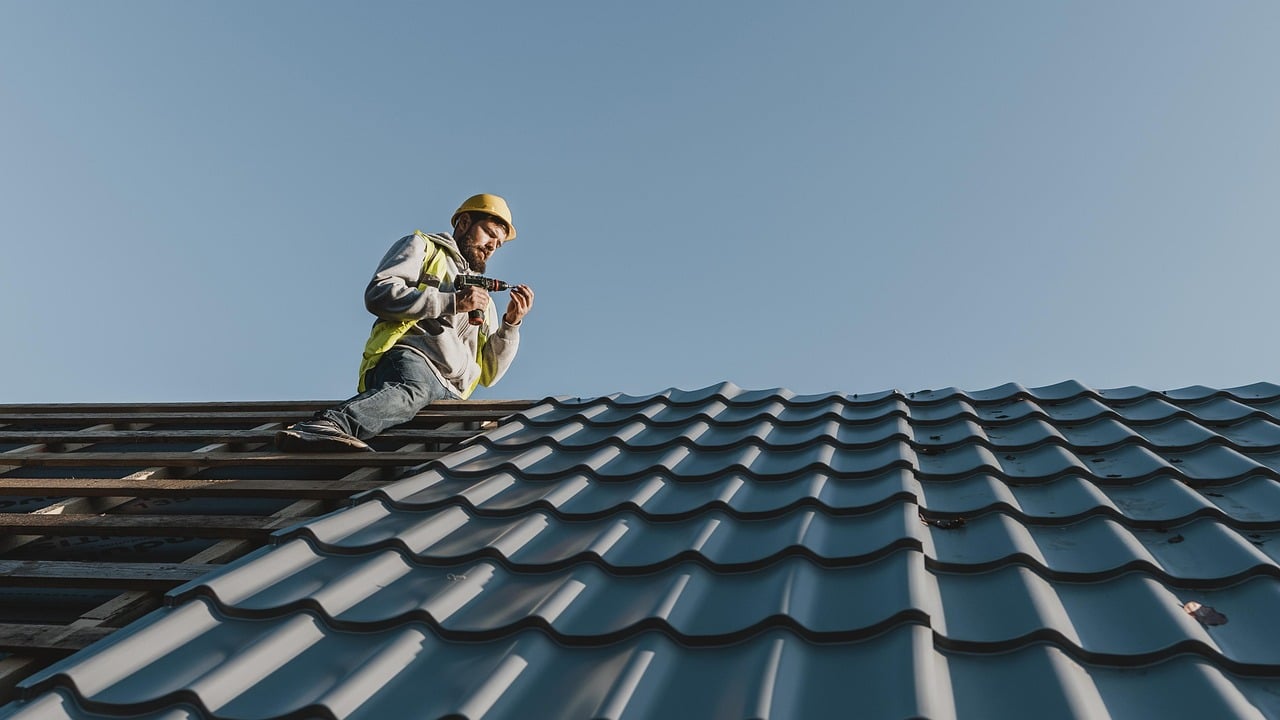Ultimate Guide to Repair a Leaking Roof [2025]

A leaking roof is more than just a minor inconvenience; it can lead to significant damage if left untreated. From water seeping into your home's structure to the risk of mold growth, a small issue can quickly escalate into a costly repair. Addressing a leaking roof requires careful attention and the right approach to ensure the problem is resolved effectively.
In this guide, we'll walk you through the essential steps to identify, assess, and repair roof leaks. Whether you're managing minor fixes or deciding when it's time to call in the professionals, this blog will provide you with practical insights to help keep your roof in top condition. Let's start by understanding the common causes of roof leaks and why timely action is so crucial.
Identifying Roof Leaks
Finding the source of a leak is the first step to resolving the issue. While water stains on ceilings or walls may indicate a leak, the actual entry point may be further away.
Visual Inspection from the Ground
Begin by examining your roof from the ground. Look for missing or broken shingles, debris buildup, or sagging areas that could indicate damage. Use binoculars for a closer view without compromising safety.
Checking the Attic
Inspect your attic for signs of water damage, such as wet insulation, water stains, or mold. Pay attention to areas near roof penetrations like vents and chimneys. Use a flashlight to detect shiny spots, indicating active moisture.
Using Water to Trace Leaks
If the source isn't apparent, have someone assist you. Run water over specific sections of the roof using a garden hose while another person checks inside for drips or stains. This method can help pinpoint hard-to-find leaks.
Understanding Common Leak Sources
Several factors can contribute to roof leaks. Addressing these areas is crucial to prevent further damage.
Damaged Shingles or Tiles
Strong winds, storms, or aging materials can cause shingles or tiles to crack, curl, or go missing, allowing water to seep through.
Flashing Issues
Flashing around chimneys, skylights, and vents is a common weak point. Over time, flashing can corrode, loosen, or develop gaps, leading to leaks.
Clogged Gutters
Blocked gutters can cause water to back up and overflow onto the roof, eventually finding its way inside.
Ice Dams
In colder regions, ice dams can form when melted snow refreezes at the roof's edge, trapping water and causing leaks.
Tools and Materials You'll Need
Repairing a leaking roof requires the right tools and materials. Having these items ready will ensure smooth progress:
- Roofing nails and screws
- Hammer
- Pry bar
- Roofing sealant or caulk
- Replacement shingles or tiles
- Flashing material
- Safety gear, including gloves and non-slip footwear
Repair Techniques for Common Scenarios
Addressing the specific cause of the leak will determine the repair approach. Here's how to handle some of the most common problems:
Replacing Damaged Shingles
- Carefully remove the damaged shingle using a pry bar.
- Slide the new shingle into place, ensuring it aligns with the others.
- Nail it down securely and apply roofing sealant over the nails to prevent water infiltration.
Fixing Flashing
- Inspect the flashing for rust, cracks, or loose sections.
- Remove damaged flashing and replace it with a new piece.
- Secure the flashing with nails and apply roofing sealant to create a watertight seal.
Clearing and Repairing Gutters
- Remove debris from gutters to allow proper water flow.
- Check for leaks in the gutter seams and repair them with a gutter sealant.
- Ensure the downspouts are free of obstructions.
Managing Ice Dams
- Safely remove the ice dam using a roof rake or similar tool.
- Apply an ice melt product to prevent refreezing.
- Install additional insulation and improve ventilation in the attic to reduce future ice dams.
Preventative Measures
Taking proactive steps can help prevent leaks before they occur. Incorporate these practices into your home maintenance routine:
Routine Inspections
Inspect your roof at least twice a year and after major storms. Look for signs of wear and tear and address minor issues promptly.
Clean Gutters Regularly
Keep gutters and downspouts clear of debris to ensure water flows freely away from your home.
Professional Maintenance
Schedule professional roof inspections every few years. Ranch Roofing offers expert services to identify and address issues that may not be visible during routine checks. Partnering with trusted professionals ensures your roof remains in optimal condition and prevents costly repairs in the future.
Safety Considerations
Roof repairs come with inherent risks, so safety should always be a priority. Here are some essential tips:
- Use sturdy footwear with a good grip to avoid slipping.
- Avoid working on the roof in adverse weather conditions.
- Employ a harness and secure it properly if working on a steep roof.
Conclusion
Repairing a leaking roof may seem daunting, but with the right approach and tools, many leaks can be addressed efficiently. By identifying the source of the problem, implementing targeted repairs, and adopting preventative measures, you can protect your home from water damage. Addressing issues promptly not only ensures the safety of your household but also extends the life of your roof for years to come.